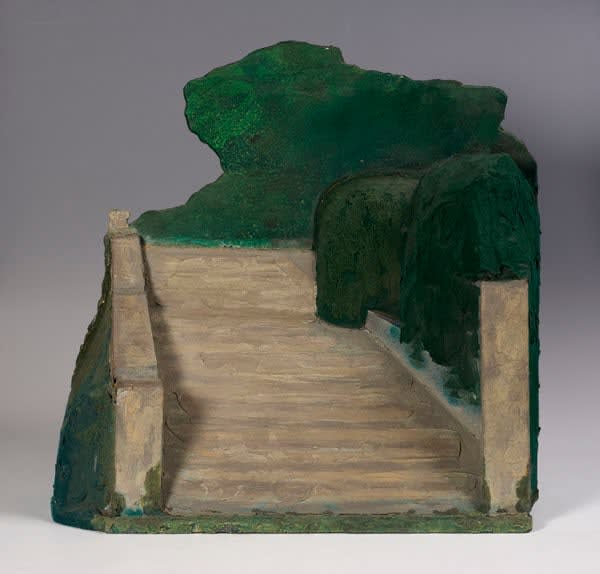Sculptor Ivor Abrahams was born to Jewish parents in Wigan, Lancashire, England on 10 January 1935. Despite family opposition, he moved to London in 1952 to study at St Martin's School of Art (1952-3) and then Camberwell School of Art (1954-7). After completing his studies he travelled widely and taught. In the 1950s he worked as a display artist for Adel Rootsteine, retaining a fascination for advertising placards, which reflect his continuing exploration of surface texture and illusion. He also worked as an apprentice at the Fiorini Art Bronze Foundry (which cast some of his work) and gained international attention through an exhibition with Peter Blake in 1960. Abrahams’s early bronzes were shown as a group in his first solo exhibition at London’s Gallery One (1962). Following this he made a radical change to his practice, working directly in plaster and latex and adopting a ‘figure and ground’ format, which he attributed to an interest in de Chirico. He was elected to the Royal Academy in 1989.
Ivor Abrahams died in London, England on 6 January 2015. His work is represented in more than 30 national and international collections including the Arts Council, the British Council, the Royal Academy, Tate, the Cass Sculpture Foundation (Goodwood) and MoMA, New York. His many exhibitions include the Henry Moore Institute, Leeds (2007); the A P Gianini Gallery, San Francisco (2001); the Royal Academy of Arts (1999); Bernard Jacobson Gallery, London; Galeries Salis, Salzburg (1991), Miriam Shiell Fine Art, Toronto (1989) and Galerie Albrecht, Munich (1987).


